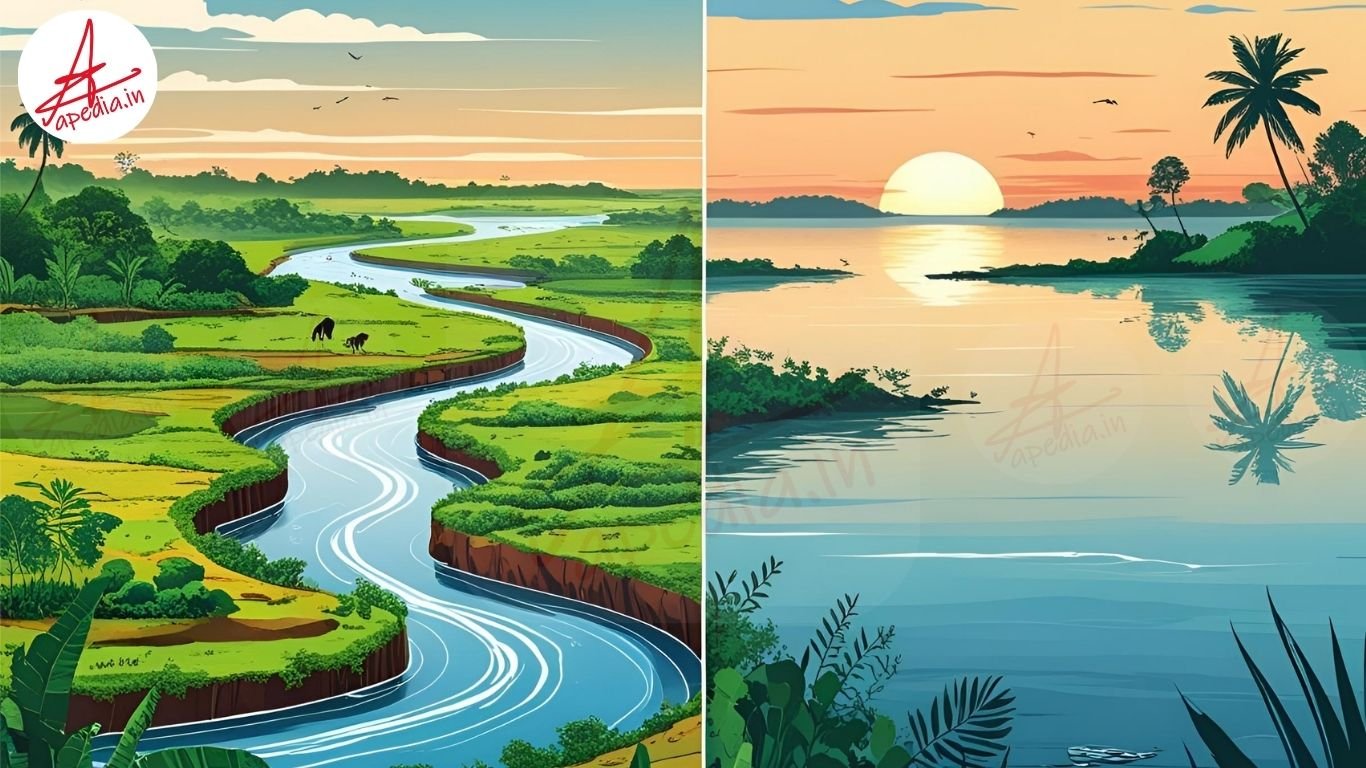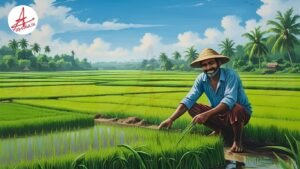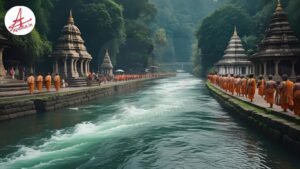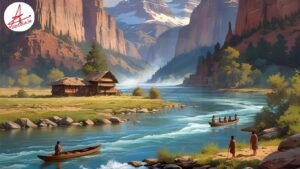A delta is a landform formed at the mouth of a river, where it deposits sediment as it flows into an ocean, sea, or lake.
An estuary is a coastal water body where freshwater from rivers meets and mixes with saltwater from the sea.
Deltas typically have a triangular or fan shape created by sediment buildup, while estuaries have a funnel-like shape due to tidal influences.
Delta: The Ganges-Brahmaputra Delta; Estuary: The estuary of the Zuari River in Goa.
Both provide rich habitats for wildlife, support fisheries, and act as natural buffers against storms and flooding.
Introduction
India’s vast river systems give rise to unique coastal features such as deltas and estuaries, which are critical to ecology, economy, and culture. Though often confused, deltas and estuaries have distinct characteristics shaped by river dynamics and coastal geography.
What is a Delta?
A delta forms where a river deposits sediments faster than the sea can remove them. This sediment accumulation creates fertile land and a branching network of distributaries. India’s largest delta is the Sundarbans, formed by the Ganges, Brahmaputra, and Meghna rivers, known for its rich biodiversity and dense mangrove forests.
What is an Estuary?
An estuary is a tidal mouth of a river, where fresh river water mixes with salty seawater. This mixing creates brackish water, supporting diverse ecosystems. Estuaries often have deeper channels than deltas and are influenced heavily by tides. Examples include the estuaries of rivers like the Zuari and Mandovi in Goa.
Key Differences
- Formation: Deltas form mainly by sediment deposition; estuaries form by tidal mixing.
- Shape: Deltas are typically fan-shaped; estuaries are funnel-shaped.
- Water Type: Deltas discharge freshwater into the sea; estuaries contain a mix of fresh and saltwater.
- Ecology: Both support rich ecosystems but differ in species due to salinity levels.
Conclusion
Understanding the difference between deltas and estuaries is important for managing India’s coastal environments sustainably. Both features contribute significantly to India’s geography, economy, and natural heritage.








